Yoga for Muscle Recovery: Maximizing Your Post-Workout Potential
As you lace up your sneakers after an intense workout, you relish in the satisfying burn of your muscles. You know you’ve pushed yourself to the limit, and that feeling of accomplishment is unbeatable. But what happens next? Often, the aftermath of a strenuous workout can leave your muscles feeling sore and fatigued, slowing down your progress and hindering your next session. This is where Yoga for Muscle Recovery comes into play.
Muscle recovery is an essential component of any fitness regimen. It’s during this phase that your muscles repair and rebuild, becoming stronger and more resilient in the process. Neglecting proper recovery can lead to decreased performance, increased risk of injury, and overall stagnation in your fitness journey. That’s where the power of yoga shines through.
Yoga is more than just stretching and relaxation—it’s a powerful tool for enhancing muscle recovery and promoting overall well-being. In this article, we’ll delve deep into the role of yoga in muscle recovery, exploring its benefits, techniques, and practical tips for integrating it into your fitness routine seamlessly.
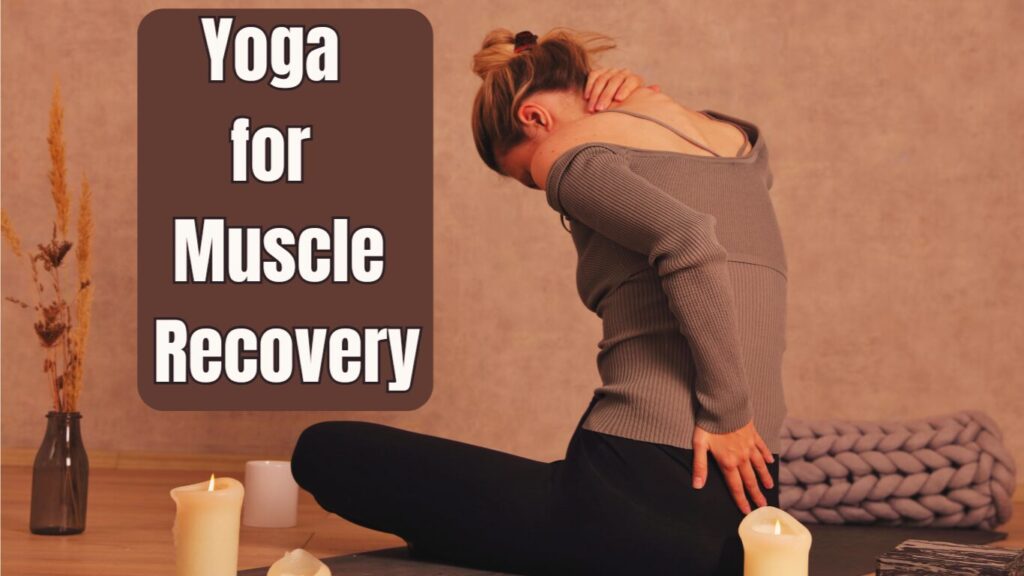
First and foremost, let’s talk about why muscle recovery matters. When you engage in physical activity, whether it’s lifting weights, running, or cycling, you subject your muscles to stress and strain. This results in microscopic tears in the muscle fibers, which is a natural part of the muscle-building process. However, for your muscles to repair and grow stronger, they need adequate time and support.
This is where yoga comes in. Unlike high-intensity workouts that further stress your muscles, yoga provides a gentle yet effective way to facilitate recovery. Through a series of restorative poses and mindful movements, yoga helps release tension and tightness in the muscles, promoting blood flow and oxygenation to aid in the repair process.
One of the key benefits of Yoga for Muscle Recovery is its ability to reduce inflammation. Inflammation is your body’s natural response to injury or stress, but when it becomes chronic, it can impede the recovery process. Certain yoga poses, such as forward folds and twists, help stimulate the lymphatic system, which plays a crucial role in removing toxins and waste products from the body, thus reducing inflammation and promoting healing.
Moreover, yoga helps improve flexibility and range of motion, which are essential for preventing injuries and enhancing overall performance. By gently stretching and elongating the muscles, yoga helps prevent them from becoming tight and restricted, allowing for smoother and more efficient movement during workouts.
In addition to its physical benefits, yoga also offers profound mental and emotional benefits that contribute to muscle recovery. The practice of mindfulness and deep breathing in yoga helps reduce stress and promote relaxation, which are essential for optimal recovery. By calming the mind and soothing the nervous system, yoga helps alleviate the mental fatigue and tension that often accompany intense workouts, allowing you to rest and recharge more effectively.
Subscribe And Get Our Free E-Book:Unlocking The Power Of Nutrition-Supplements, Substitutes, and Superfoods!
In the upcoming sections of this article, we’ll explore specific yoga poses and sequences that are particularly beneficial for muscle recovery, as well as tips for incorporating them into your post-workout routine. Whether you’re a seasoned yogi or a newbie to the practice, there’s something for everyone to gain from integrating yoga into their fitness regimen.
So, if you’re ready to take your muscle recovery to the next level and unleash your full potential, join us on this journey through the transformative power of yoga. Get ready to feel stronger, more flexible, and more balanced than ever before.
Yoga For Muscle Recovery And Flexibility Video
Understanding the Old Ways of Recovery
Muscle recovery is a fundamental aspect of any fitness journey, yet it’s often overlooked or misunderstood. So, what exactly is muscle recovery, and why is it so crucial for fitness enthusiasts?
At its core, muscle recovery refers to the process by which your muscles repair and rebuild themselves after being subjected to physical stress or exertion. When you engage in activities like weightlifting, running, or even yoga, you create micro-tears in your muscle fibers. While this may sound counterproductive, it’s actually a necessary step in the muscle-building process.
Think of it this way: when you lift weights, you’re essentially breaking down your muscles on a microscopic level. It’s during the recovery phase that your body repairs these micro-tears, making your muscles stronger and more resilient than before. This process, known as muscle hypertrophy, is essential for building strength, increasing muscle mass, and improving overall performance.
So, why is muscle recovery so essential? For starters, it allows your body to adapt to the physical demands placed upon it. Without adequate recovery, your muscles would remain in a constant state of fatigue and breakdown, making it difficult to progress in your fitness goals. Additionally, proper muscle recovery helps prevent injury and overtraining, both of which can derail your progress and sideline you from your workouts.
Traditionally, there are several methods used to promote muscle recovery, each playing a vital role in supporting your body’s natural healing processes. Rest, for example, is perhaps the most obvious and straightforward method of muscle recovery. Giving your muscles time to rest and recuperate between workouts allows them to repair and rebuild more effectively.
Hydration is another crucial aspect of muscle recovery. Staying well-hydrated helps flush out toxins and waste products from your muscles, promoting faster recovery and reducing the risk of cramps and muscle soreness. Aim to drink plenty of water throughout the day, especially before and after your workouts.
Nutrition also plays a significant role in muscle recovery. Consuming an adequate amount of protein, carbohydrates, and healthy fats provides your body with the essential nutrients it needs to repair and rebuild muscle tissue. Additionally, certain nutrients like omega-3 fatty acids and antioxidants have been shown to reduce inflammation and promote faster recovery.
While these traditional methods of muscle recovery are undoubtedly effective, incorporating yoga into your routine can take your recovery to the next level. In the next section of this article, we’ll explore how yoga can complement these traditional methods and enhance your overall muscle recovery process. Get ready to dive deeper into the world of yoga for muscle recovery.
The Benefits of Yoga for Muscle Recovery
Now that we’ve laid the groundwork for understanding Yoga for Muscle Recovery, let’s delve deeper into the specific benefits that yoga offers in aiding muscle recovery. While yoga is often associated with flexibility and relaxation, its benefits extend far beyond that, especially when it comes to supporting muscle recovery and overall fitness.
One of the primary ways that yoga promotes muscle recovery is through its emphasis on flexibility. Many yoga poses involve stretching and lengthening the muscles, which helps reduce stiffness and tension that can accumulate after intense workouts. By incorporating yoga into your routine, you can help prevent muscles from becoming tight and restricted, allowing for smoother and more efficient movement during workouts.
In addition to improving flexibility, yoga also plays a crucial role in enhancing blood circulation throughout the body. Certain yoga poses, such as inversions and twists, help stimulate blood flow to different areas, including those hard-to-reach muscles that may not receive adequate circulation during typical workouts. This increased blood flow delivers oxygen and nutrients to the muscles, promoting faster recovery and reducing the risk of injury.
Moreover, yoga has been shown to reduce muscle soreness and discomfort, making it an ideal complement to traditional methods of muscle recovery. Studies have found that regular yoga practice can help decrease levels of inflammatory markers in the body, which are often elevated after intense exercise. By reducing inflammation, yoga helps alleviate the pain and discomfort associated with muscle soreness, allowing you to bounce back quicker and get back to your workouts with renewed energy.
But don’t just take our word for it—numerous scientific studies and expert opinions support the benefits of yoga for muscle recovery. A study published in the Journal of Strength and Conditioning Research found that participants who incorporated yoga into their post-workout routine experienced significantly less muscle soreness and fatigue compared to those who did not practice yoga. Another study published in the International Journal of Yoga Therapy found that yoga can improve flexibility, balance, and overall physical function, all of which contribute to enhanced muscle recovery.
Furthermore, many fitness professionals and athletes swear by the benefits of yoga for muscle recovery. From professional athletes to weekend warriors, yoga has become an essential part of many athletes’ training regimens. Not only does it help prevent injuries and improve performance, but it also promotes mental clarity and relaxation, which are essential for optimal recovery.
Comparison of Muscle Recovery Methods Chart:
| Aspect of Recovery | Traditional Methods | Yoga for Muscle Recovery | Specific Examples of Yoga Poses | Additional Benefits of Yoga Poses |
|---|---|---|---|---|
| Flexibility Improvement | Stretching exercises can moderately improve flexibility. | Yoga significantly enhances flexibility through various poses. | Downward-Facing Dog, Pigeon Pose | Enhances range of motion and reduces stiffness. |
| Blood Circulation | Light exercise or massages can improve circulation. | Yoga improves circulation through dynamic and static poses. | Legs-Up-The-Wall, Sun Salutations | Helps deliver oxygen and nutrients to muscles more efficiently. |
| Inflammation Reduction | Ice baths and anti-inflammatory foods can help. | Yoga reduces inflammation through relaxation and specific poses. | Forward Folds, Twists | Stimulates the lymphatic system and aids in detoxification. |
| Muscle Soreness Relief | Rest, hydration, and nutrition are common methods. | Yoga alleviates soreness with gentle stretching and relaxation. | Child’s Pose, Cat-Cow Stretch | Reduces muscle tension and promotes relaxation. |
| Mental Relaxation | Meditation and adequate rest help relax the mind. | Yoga integrates mindfulness and breathing techniques for deep mental relaxation. | Savasana, Seated Meditation | Lowers stress hormones and enhances mood. |
| Injury Prevention | Proper warm-ups and using correct form in exercises. | Yoga enhances body awareness, flexibility, and strength to prevent injuries. | Warrior Poses, Tree Pose | Improves balance and coordination. |
| Recovery Time | Proper nutrition and rest shorten recovery time. | Yoga accelerates recovery by improving blood flow and reducing muscle tension. | Reclining Bound Angle Pose, Cobra Pose | Speeds up muscle repair and reduces recovery time. |
| Overall Well-being | Balanced diet, regular exercise, and sufficient sleep. | Yoga promotes holistic well-being, combining physical and mental health benefits. | Full Body Stretch, Happy Baby Pose | Enhances mental clarity and physical vitality. |
Additional Details
- Flexibility Improvement:
- Traditional Methods: Focus on targeted stretching exercises post-workout.
- Yoga: Incorporates a variety of poses that improve flexibility comprehensively.
- Specific Examples of Yoga Poses: Downward-Facing Dog, Pigeon Pose
- Additional Benefits of Yoga Poses: Enhances range of motion and reduces stiffness.
- Blood Circulation:
- Traditional Methods: Light exercises like walking or massages increase circulation.
- Yoga: Uses poses that enhance circulation throughout the body, especially in targeted muscle groups.
- Specific Examples of Yoga Poses: Legs-Up-The-Wall, Sun Salutations
- Additional Benefits of Yoga Poses: Helps deliver oxygen and nutrients to muscles more efficiently.
- Inflammation Reduction:
- Traditional Methods: Techniques like ice baths and consuming anti-inflammatory foods help reduce inflammation.
- Yoga: Certain poses and the practice of mindfulness help decrease inflammation levels.
- Specific Examples of Yoga Poses: Forward Folds, Twists
- Additional Benefits of Yoga Poses: Stimulates the lymphatic system and aids in detoxification.
- Muscle Soreness Relief:
- Traditional Methods: Ensuring proper hydration, nutrition, and taking rest are common.
- Yoga: Gentle stretching and relaxation in yoga can significantly reduce muscle soreness.
- Specific Examples of Yoga Poses: Child’s Pose, Cat-Cow Stretch
- Additional Benefits of Yoga Poses: Reduces muscle tension and promotes relaxation.
- Mental Relaxation:
- Traditional Methods: Meditation and getting enough rest are key.
- Yoga: Combines physical postures with mindfulness and breathing techniques for enhanced relaxation.
- Specific Examples of Yoga Poses: Savasana, Seated Meditation
- Additional Benefits of Yoga Poses: Lowers stress hormones and enhances mood.
- Injury Prevention:
- Traditional Methods: Emphasize proper warm-ups and correct exercise form.
- Yoga: Improves overall body awareness, flexibility, and strength, which contributes to injury prevention.
- Specific Examples of Yoga Poses: Warrior Poses, Tree Pose
- Additional Benefits of Yoga Poses: Improves balance and coordination.
- Recovery Time:
- Traditional Methods: Optimal nutrition and adequate rest are essential for a quicker recovery.
- Yoga: Speeds up recovery by improving blood flow and relieving muscle tension.
- Specific Examples of Yoga Poses: Reclining Bound Angle Pose, Cobra Pose
- Additional Benefits of Yoga Poses: Speeds up muscle repair and reduces recovery time.
- Overall Well-being:
- Traditional Methods: A combination of balanced diet, regular exercise, and sufficient sleep.
- Yoga: Promotes overall well-being by addressing both physical and mental health.
- Specific Examples of Yoga Poses: Full Body Stretch, Happy Baby Pose
- Additional Benefits of Yoga Poses: Enhances mental clarity and physical vitality.
The benefits of yoga for muscle recovery are undeniable. From improving flexibility and blood circulation to reducing muscle soreness and inflammation, yoga offers a holistic approach to supporting your body’s natural healing processes. Whether you’re a seasoned yogi or new to the practice, incorporating yoga into your routine can help take your muscle recovery to the next level and unlock your full potential in your fitness journey. So roll out your mat, strike a pose, and reap the rewards of Yoga for Muscle Recovery.
Key Yoga Poses for Muscle Recovery
Now that we’ve explored the numerous benefits of Yoga for Muscle Recovery, it’s time to roll out the mat and dive into some specific yoga poses that can turbocharge your recovery process. Whether you’re a seasoned yogi or a complete beginner, these poses are sure to leave you feeling refreshed, rejuvenated, and ready to tackle your next workout with gusto.
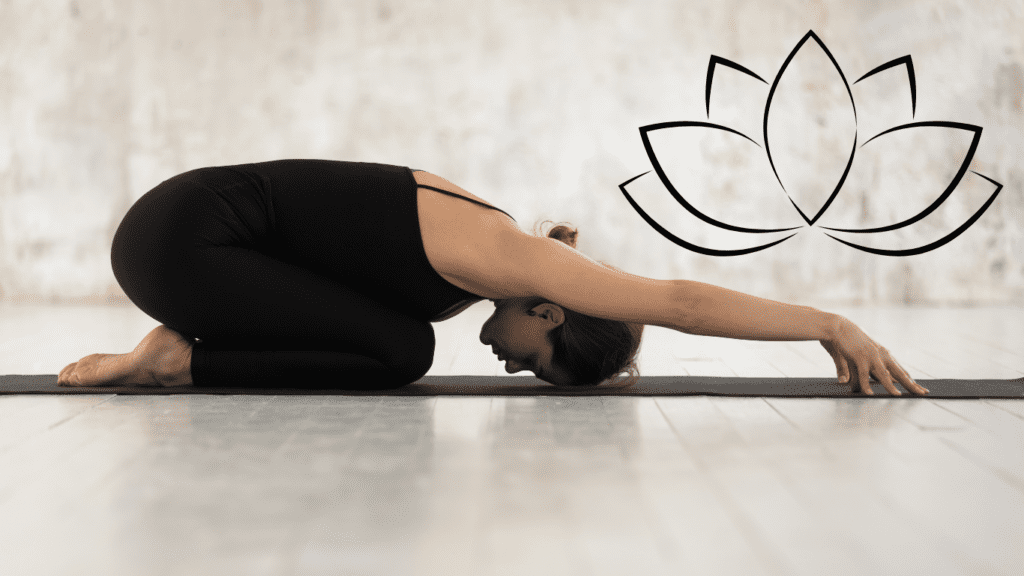
Let’s start with a classic favorite: Child’s Pose. This gentle, restorative pose is perfect for relieving tension in the lower back, hips, and thighs—all common trouble spots for athletes and fitness enthusiasts. Simply kneel on the mat, then slowly lower your torso down towards your thighs, extending your arms out in front of you. Close your eyes, take a few deep breaths, and surrender to the soothing stretch as you melt into the mat.
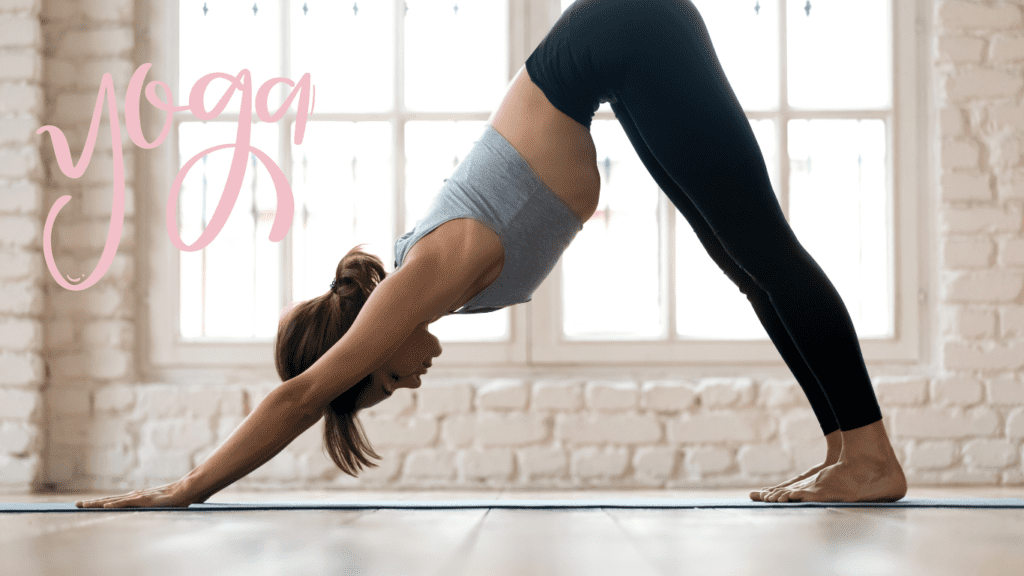
Next up, we have Downward-Facing Dog. This iconic pose not only stretches the entire back body, from the calves to the shoulders, but it also helps improve circulation and energize the body. Start on your hands and knees, then lift your hips towards the sky, pressing your heels down towards the mat. Engage your core, relax your neck, and take a few deep breaths as you lengthen through the spine and legs.
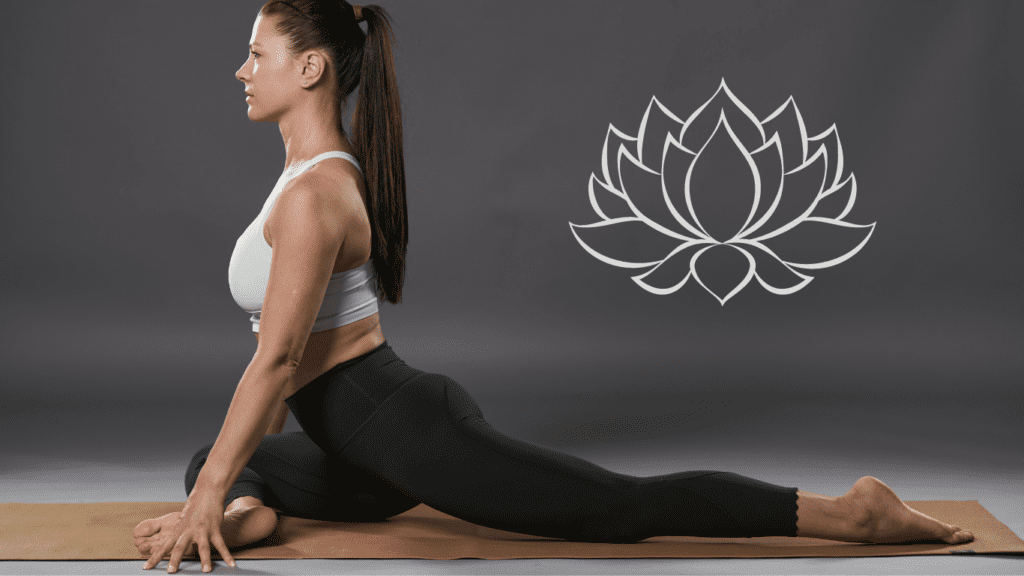
For those looking to take their muscle recovery to the next level, Pigeon Pose is a must-try. This deep hip opener targets the glutes, hips, and piriformis muscles, releasing tension and tightness that can impede recovery. Begin in a tabletop position, then bring one knee towards your wrist, sliding the other leg back behind you. Square your hips towards the front of the mat, then fold forward over your front leg, feeling the stretch deepen with each breath.

If you’re feeling adventurous, why not give Wheel Pose a whirl? This backbend not only opens up the chest and shoulders but also strengthens the arms, legs, and core—all while boosting mood and energy levels. Lie on your back with your knees bent and feet flat on the mat, then place your hands by your ears, fingers pointing towards your shoulders. Press into your hands and feet as you lift your hips towards the sky, coming into a full backbend. Take a few breaths here, then slowly lower back down with control.
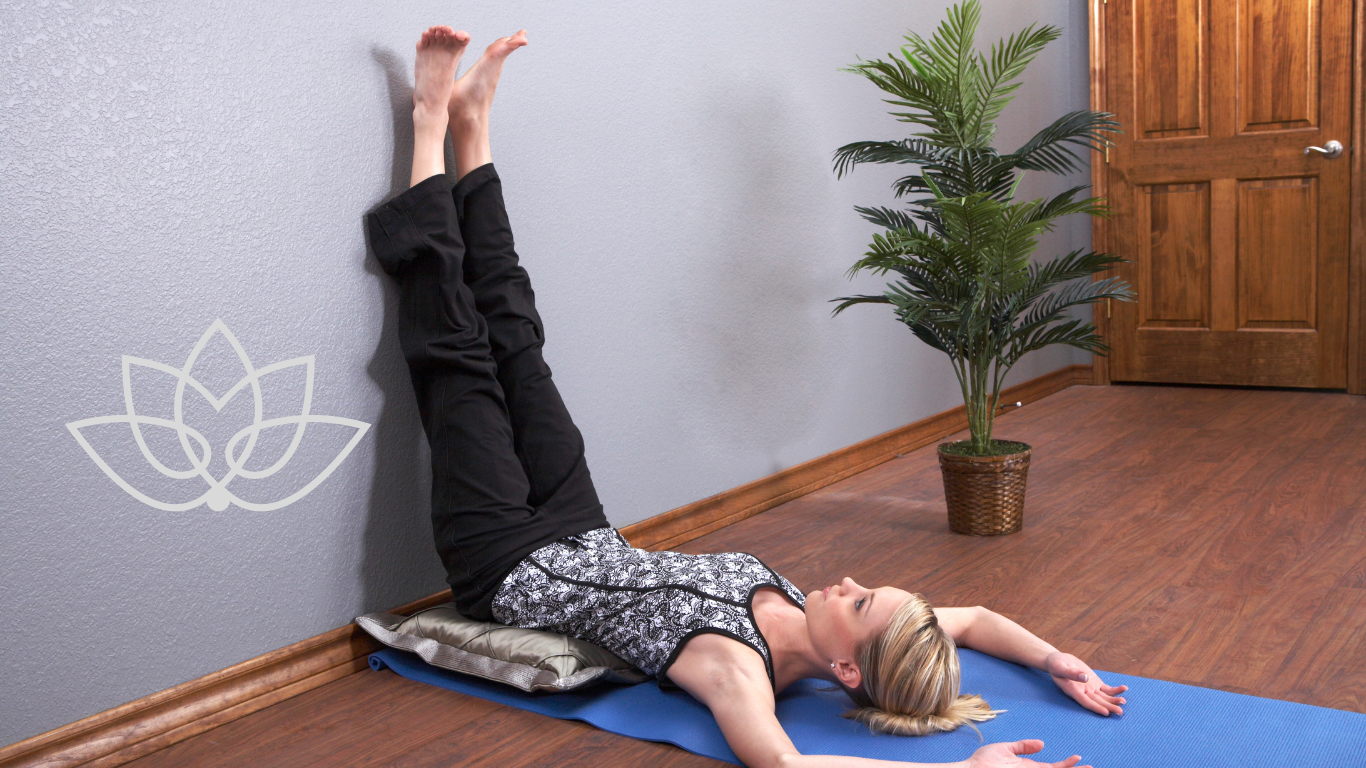
Last but certainly not least, we have Legs-Up-The-Wall Pose. This gentle inversion is a favorite among yogis for its ability to reduce swelling, improve circulation, and promote relaxation. Simply lie on your back with your hips against the wall, then extend your legs up towards the ceiling, resting them against the wall. Close your eyes, soften your breath, and allow gravity to do the work as you surrender to the blissful stretch.
These are just a few of the many yoga poses that can aid in muscle recovery. Whether you’re a beginner or a seasoned practitioner, incorporating these poses into your routine can help alleviate tension, reduce soreness, and promote overall well-being. So grab your mat, strike a pose, and let the healing power of yoga work its magic on your body and mind. Your muscles will thank you later!
Tips for Incorporating Yoga into Your Routine
Now that we’ve explored the myriad benefits of Yoga for Muscle Recovery, it’s time to discuss how you can seamlessly integrate yoga into your regular fitness routine. Whether you’re a seasoned yogi or a complete beginner, these practical tips will help you reap the rewards of yoga for enhanced muscle recovery.
First and foremost, consider the timing of your yoga practice. While yoga can be beneficial at any time of day, many experts recommend practicing yoga after your workouts to maximize its muscle recovery benefits. By incorporating yoga into your post-workout routine, you can capitalize on the increased blood flow and flexibility that come from your workout, allowing for deeper stretches and faster recovery.
That being said, there’s no one-size-fits-all approach to yoga timing. Some people may prefer to practice yoga in the morning to start their day on a calm and centered note, while others may find it more beneficial as a wind-down ritual before bed. Experiment with different times of day to see what works best for you and your schedule.
When it comes to finding the right yoga class or instructor, it’s essential to do your research. Look for classes specifically tailored to muscle recovery or post-workout recovery, as these will likely incorporate poses and sequences designed to target tight muscles and promote relaxation. Additionally, consider the teaching style and personality of the instructor—finding someone who resonates with you can make all the difference in your yoga journey.
If you’re new to yoga, don’t be intimidated by the seemingly endless array of poses and terminology. Start with beginner-friendly classes or online tutorials that focus on gentle, restorative poses. As you become more comfortable with the practice, you can gradually explore more challenging poses and sequences.
Remember to listen to your body and honor its limitations. Yoga is not about forcing yourself into contorted shapes or pushing through pain—it’s about finding ease and comfort in each pose, regardless of your level of flexibility or strength. If a pose doesn’t feel right for you, don’t hesitate to modify or skip it altogether.
Incorporating yoga props such as blocks, straps, and bolsters can also enhance your practice and make it more accessible. These props can help support your body in certain poses, allowing you to deepen your stretches and relax more fully. Don’t be afraid to experiment with different props to see what works best for you.
Finally, approach your yoga practice with an open mind and a sense of curiosity. Yoga for Muscle Recovery is not just about physical movement—it’s also about cultivating mindfulness and awareness of your body and breath. Take the time to connect with yourself on a deeper level, and you’ll soon discover the transformative power of yoga in your recovery routine.
In conclusion, integrating yoga into your recovery routine is a simple yet effective way to support your body’s natural healing processes and enhance your overall fitness journey. By following these tips and staying consistent with your practice, you’ll soon experience the myriad benefits of yoga for muscle recovery firsthand. So roll out your mat, strike a pose, and let the healing power of yoga work its magic on your body and mind.
Common Mistakes to Avoid in Applying Yoga into Your Muscle Recovery
As you embark on your journey of Yoga for Muscle Recovery, it’s essential to be mindful of common mistakes that can hinder your progress and potentially lead to injury. While yoga is a gentle and effective way to support muscle recovery, it’s crucial to approach it with intention and awareness. Let’s explore some of the most common mistakes to avoid, along with practical solutions to ensure you get the most out of your practice.
One common mistake is pushing yourself too hard, too soon. It can be tempting to try to force your body into advanced poses or push through discomfort in pursuit of progress. However, this approach can lead to strain, injury, and setbacks in your muscle recovery journey. Instead, listen to your body and honor its limitations. If a pose feels too challenging or uncomfortable, back off and modify as needed. Remember, progress in yoga is gradual and incremental—trust that your body will respond positively to consistent, mindful practice over time.
Another mistake is neglecting proper alignment and form. In yoga, proper alignment is key to reaping the full benefits of each pose while minimizing the risk of injury. It’s essential to pay attention to cues from your instructor and focus on alignment cues such as grounding through your feet, lengthening through the spine, and engaging the core. If you’re practicing at home or following an online tutorial, consider filming yourself to check your alignment or seek feedback from a qualified instructor.
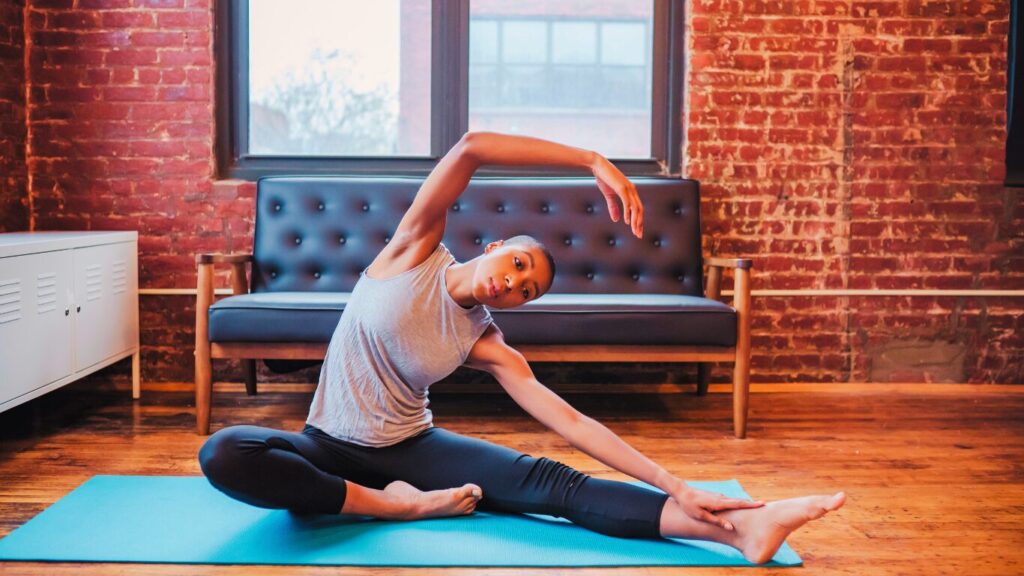
Furthermore, rushing through your practice or skimping on relaxation can undermine the effectiveness of Yoga for Muscle Recovery. Yoga is not just about physical movement—it’s also about cultivating mindfulness, awareness, and relaxation. Skipping the final relaxation pose or rushing through your practice can prevent your body from fully releasing tension and accessing the parasympathetic nervous system, which is essential for rest and recovery. Make sure to allocate enough time for relaxation at the end of your practice and savor each moment of stillness and quiet.
Another common mistake is neglecting to breathe mindfully. Breath is the foundation of yoga, and conscious breathing can help synchronize movement with breath, calm the mind, and enhance the effectiveness of your practice. Yet, it’s easy to fall into the trap of shallow or erratic breathing, especially when faced with challenging poses or intense sensations. Take the time to cultivate a steady, rhythmic breath pattern throughout your practice, inhaling deeply through the nose and exhaling fully through the mouth. Allow your breath to guide you through each pose, anchoring you in the present moment and facilitating deeper relaxation and muscle recovery.
Finally, comparing yourself to others or striving for perfection can detract from the true essence of yoga. Yoga is a personal journey, and each individual’s body is unique. Comparing yourself to others or striving for an idealized image of perfection can lead to feelings of inadequacy, frustration, and self-judgment. Instead, embrace your body’s unique abilities and limitations, and celebrate the progress you’ve made on your own journey. Remember that yoga is not about achieving the perfect pose—it’s about showing up on your mat with an open heart and a willingness to grow and learn.
In conclusion, avoiding these common mistakes and approaching your Yoga for Muscle Recovery practice with intention, awareness, and self-compassion will help you maximize its effectiveness and reap the full benefits of this powerful healing modality. By listening to your body, honoring its needs, and cultivating mindfulness both on and off the mat, you can support your body’s natural healing processes and enhance your overall well-being. So let go of perfectionism, embrace the journey, and enjoy the transformative power of yoga for muscle recovery.
The Final Stretch of Yoga for Muscle Recovery
In this comprehensive journey through Yoga for Muscle Recovery, we’ve covered a wealth of information on how yoga can be a game-changer in your fitness routine. Let’s take a moment to recap the key points discussed in the previous six parts.
First and foremost, we delved into the importance of muscle recovery in fitness and how it plays a crucial role in allowing your muscles to repair and rebuild after intense workouts. We highlighted traditional methods of muscle recovery such as rest, hydration, and nutrition, setting the stage for the transformative power of yoga.
Next, we explored the numerous benefits of yoga for muscle recovery, from reducing inflammation and improving flexibility to enhancing blood circulation and reducing muscle soreness. Through scientific studies and expert opinions, we learned how yoga can complement traditional methods of muscle recovery and support overall well-being.
We then discussed practical tips for incorporating yoga into your recovery routine, including the best times to practice and how to find the right class or instructor. By approaching yoga with intention, awareness, and self-compassion, you can maximize its effectiveness and reap the full benefits of this powerful healing modality.
Moving on, we warned against common mistakes to avoid in yoga for muscle recovery, such as pushing yourself too hard, neglecting proper alignment, rushing through your practice, and comparing yourself to others. By sidestepping these pitfalls and embracing mindfulness, relaxation, and self-compassion, you can unlock the full potential of yoga for muscle recovery.
Now, as we reach the final part of our journey, it’s essential to reiterate the importance of muscle recovery and how yoga can support this process. Whether you’re a seasoned athlete or a weekend warrior, giving yoga a try in your recovery routine can be a game-changer. Not only does it promote physical healing and recovery, but it also fosters mental clarity, relaxation, and overall well-being.
So, if you’re ready to take your muscle recovery to the next level, I encourage you to roll out your mat, strike a pose, and give yoga a try. Whether you’re stretching out those tight muscles after a tough workout or winding down after a long day, yoga has something to offer everyone.
And remember, the journey of Yoga for Muscle Recovery is not about achieving perfection—it’s about showing up, being present, and embracing the process. So why not give it a try and see how it can benefit you? I’d love to hear about your experiences with yoga and muscle recovery in the comments below. Let’s keep the conversation going and support each other on our wellness journeys. Namaste!


